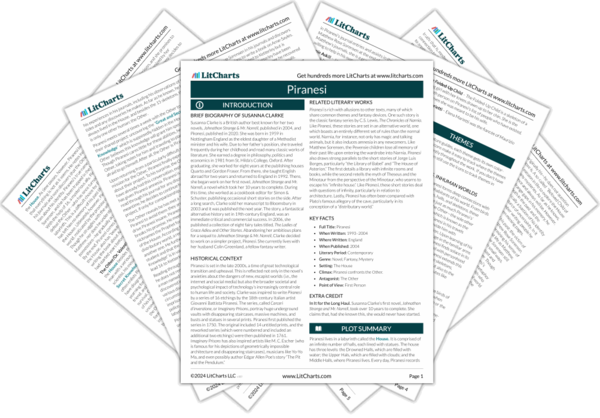Piranesi and Raphael gradually grow closer, gaining a genuine appreciation for each other’s company. Even so, the differences in their belief systems at times produces friction, as when Raphael expresses sadness at the deaths of the people in the alcove. Though he appreciates her kindness, Piranesi is unsettled by her sad, fatalistic version of death; from his perspective, the dead are not gone, they’re merely in a different form.
